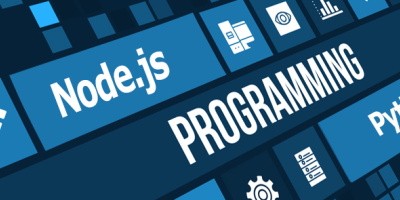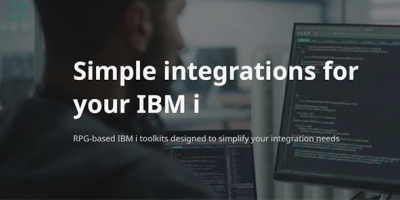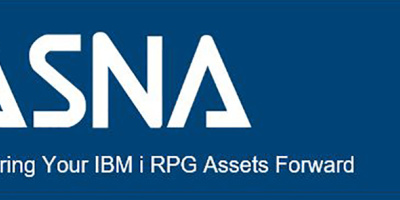It is no secret that legacy applications are significant hurdles that impede the full realization of your personnel on both sides of the equation: developers and end-users.
In this case, I would like to write about the end-users as a homage for their hard dedication. They are the ones that struggle with IT inefficiencies and interact with applications every single working day with all their strengths and shortcomings. Although all may seem to be about users only, it is also about customer service. Front-line and service workers are the ones that deal the customer expectations and frustration. The heavy squeeze between customer satisfaction and business goals frequently doesn’t match reality.
Reason #1: Recent generations have no experience with black and green screens at all
The recent generations entering the job market have never encountered a 5250 terminal emulator. Although there are very well-designed 5250 applications that can make particular operative work faster for experienced users, the UI/UX preferences have shifted toward incorporating intuitive and streamlined GUIs with colors and image interfaces that can lower entry barriers, even without training. IT consumerization is not merely a trend. And it is a reality impacting every business.
Black and green screens might scare off fresh talent. Youngsters are used to their easy-to-use smartphones and computers regardless of the brand and operating system: the common language that newer generations understand natively. Moreover, innovations such as touch displays have enabled the intuitiveness of IT.
Reason #2: The amount of information that legacy applications can display at once is limited
Typically 5250 screens are constrained to only 24x80 or 27x132 lines of characters/columns. When developers have the requirement to accommodate more data in 5250 ‘green screens’ than can fit, there are few options at their disposal. The most often option is to break applications into separate screens or record formats and use function keys or other methods to move users to the following data page.
Yesterday’s constraints are no longer valid with more powerful PCs, modern operating systems, and high-definition monitors that allow displaying more data at a glance. Multi-page or multi-screen operations almost have no place in modern interfaces nowadays. Users can do multiple functions in a single interface easily, improving the workflow speed and enabling productivity.
If we put this in practical terms, imagine we are mere mortal users that would like to analyze thousands of rows of information. You would agree that significant limitations will hinder his ability to do the task efficiently. Would he be able to show the information required for the analysis? Perhaps. Will this person be able to do it fast? I doubt it. I will use the same example for the following reason.
Reason #3: Legacy applications do not integrate well with modern native applications
Sometimes it's hard to understand why we still use 5250 applications today. Still, if you go back to the history books, those green screens were a revolutionary technology. Before 5250, it wasn't easy to interact with computers synchronously. This step forward allowed more users to get the information they needed much faster. It worked by democratizing data and empowering users. In other words, a highly empowering and productive technology leaped compared to all the technology available at the time.
But this was in 1977, before the now widely adopted client-server paradigm and web standards. Today, user expectations are beyond business technologies. Suppose we return to the example of the user who needs to analyze thousands of rows of data. In that case, he will find that he would like to use his spreadsheet to compare it with another data set. First of all, we would require to get to the right screen, select the data, copy the data, go to the spreadsheet, paste the data into the spreadsheet, go back to the 5250 screens, and scroll down. Rinse and repeat.
If we want to make it even worse, what happens if the user requires far more data than it can display at once? Although this is an extreme and not very practical case, it would require a systems analyst to support the user. With nowadays technology, systems analysts would better use their talents for more important duties that take advantage of knowledge and experience better.
Reason #4: COVID-19 and the Great Resignation
During the COVID-19 pandemic, many organizations faced the need to change processes and tools fast to remain competitive and in business. Although the drivers that led to the Great Resignation may not have a direct link to legacy technology, it undoubtedly does not help. Legacy applications have a terrible reputation for adaptability, and RPG developers' talent gap does not improve things. Unfortunately, users relying on legacy applications to do their jobs may find themselves in antiquated workflows that do not fulfill their daily challenges. Users often have to spend time coming up with workarounds to the shortcomings of the legacy application by using spreadsheets, the primary pollinators of the dreaded shadow IT.
Many businesses face multiple challenges in recruiting and onboarding associates. In the US alone, 47.8 million workers quit their jobs, the highest average on record. This challenge means that many companies are facing multiple challenges in recruiting and onboarding associates. Training users on legacy apps requires more effort than modern, intuitive apps.
How to Overcome These Challenges And Boost Workforce Productivity?
Fortunately, the solution to eliminating all of these challenges and ushering in a bold new era of productivity across your business is much simpler than you might think. Modernizing your legacy IBM i applications to modern, easy-to-use applications and including users in the planning will create several new opportunities for your organization. Involving the people who operate the processes is a factor contributing to the success of the project. Often the business users are the catalyst for changes to business processes.
Adopt a user-first mentality
Keeping operations running smoothly and satisfying customers is keeping employees happy. So, suppose the premise is to offer the best user experience to your users. In that case, expect to assess the situation with your workforce first.
Creating a business case for application modernization that includes business users is critical. Usually, an IBM i application modernization project start on a technical front without determining the users' drivers of success. Often the business users are the catalyst for changes to business processes - they have a stake in the process improvement - but they must own the changes. The changes to the process are supposed to reduce costs and speed up the processes. These benefits are difficult to achieve without the advice and cooperation of the people who are part of the processes.
Include users of all levels of experience
It is usual to find organizations that simplify designing the user experience by designating Power Users or champions based on experience and tenure in a company. Unfortunately, it is not representative of the whole population. It ignores new generations of users who haven't had enough exposure to the app and can bring new ideas to the table that can make the app more user-friendly.
Minimize business disruption
Technology is all about enabling human potential. Introducing new applications (purchased or rewritten) to replace legacy applications may disrupt business activity because users face new ways of working and are less productive as they learn how to use the new application. Before rolling out a modernized application, performing user acceptance testing is critical.
Choosing the proper IBM i application modernization method and tools for success
Fortunately, great IBM i application modernization tools are at our disposal nowadays that can make applications function like new, without the overwhelming task of migration.
LANSA offers powerful and efficient solutions for the modernization of IBM i software. It provides several different tools that complement each other.
- aXes is a web-enabling tool that automates the building of IBM i web applications. With aXes, you can easily convert your existing IBM i 5250 applications into web pages without changing the source code. It is easy to securely allow seasonal workers, casual users, remote personnel, and customers to access and use applications.
- RAMP’s (Rapid Application Modernization Process) ability to combine the old with the new addresses your immediate tactical issues for green screen to GUI modernization and your long-term redevelopment and replacement strategies for 5250 application modernization.
- Visual LANSA is a platform for rapid application development with minimal code. It allows you to create mobile, web, and desktop applications.























 More than ever, there is a demand for IT to deliver innovation. Your IBM i has been an essential part of your business operations for years. However, your organization may struggle to maintain the current system and implement new projects. The thousands of customers we've worked with and surveyed state that expectations regarding the digital footprint and vision of the company are not aligned with the current IT environment.
More than ever, there is a demand for IT to deliver innovation. Your IBM i has been an essential part of your business operations for years. However, your organization may struggle to maintain the current system and implement new projects. The thousands of customers we've worked with and surveyed state that expectations regarding the digital footprint and vision of the company are not aligned with the current IT environment. TRY the one package that solves all your document design and printing challenges on all your platforms. Produce bar code labels, electronic forms, ad hoc reports, and RFID tags – without programming! MarkMagic is the only document design and print solution that combines report writing, WYSIWYG label and forms design, and conditional printing in one integrated product. Make sure your data survives when catastrophe hits. Request your trial now! Request Now.
TRY the one package that solves all your document design and printing challenges on all your platforms. Produce bar code labels, electronic forms, ad hoc reports, and RFID tags – without programming! MarkMagic is the only document design and print solution that combines report writing, WYSIWYG label and forms design, and conditional printing in one integrated product. Make sure your data survives when catastrophe hits. Request your trial now! Request Now. Forms of ransomware has been around for over 30 years, and with more and more organizations suffering attacks each year, it continues to endure. What has made ransomware such a durable threat and what is the best way to combat it? In order to prevent ransomware, organizations must first understand how it works.
Forms of ransomware has been around for over 30 years, and with more and more organizations suffering attacks each year, it continues to endure. What has made ransomware such a durable threat and what is the best way to combat it? In order to prevent ransomware, organizations must first understand how it works. Disaster protection is vital to every business. Yet, it often consists of patched together procedures that are prone to error. From automatic backups to data encryption to media management, Robot automates the routine (yet often complex) tasks of iSeries backup and recovery, saving you time and money and making the process safer and more reliable. Automate your backups with the Robot Backup and Recovery Solution. Key features include:
Disaster protection is vital to every business. Yet, it often consists of patched together procedures that are prone to error. From automatic backups to data encryption to media management, Robot automates the routine (yet often complex) tasks of iSeries backup and recovery, saving you time and money and making the process safer and more reliable. Automate your backups with the Robot Backup and Recovery Solution. Key features include: Business users want new applications now. Market and regulatory pressures require faster application updates and delivery into production. Your IBM i developers may be approaching retirement, and you see no sure way to fill their positions with experienced developers. In addition, you may be caught between maintaining your existing applications and the uncertainty of moving to something new.
Business users want new applications now. Market and regulatory pressures require faster application updates and delivery into production. Your IBM i developers may be approaching retirement, and you see no sure way to fill their positions with experienced developers. In addition, you may be caught between maintaining your existing applications and the uncertainty of moving to something new. IT managers hoping to find new IBM i talent are discovering that the pool of experienced RPG programmers and operators or administrators with intimate knowledge of the operating system and the applications that run on it is small. This begs the question: How will you manage the platform that supports such a big part of your business? This guide offers strategies and software suggestions to help you plan IT staffing and resources and smooth the transition after your AS/400 talent retires. Read on to learn:
IT managers hoping to find new IBM i talent are discovering that the pool of experienced RPG programmers and operators or administrators with intimate knowledge of the operating system and the applications that run on it is small. This begs the question: How will you manage the platform that supports such a big part of your business? This guide offers strategies and software suggestions to help you plan IT staffing and resources and smooth the transition after your AS/400 talent retires. Read on to learn:
LATEST COMMENTS
MC Press Online